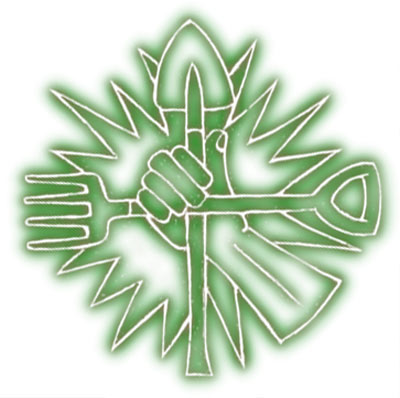Spring Seeding Guide
By Nick Routledge for the Observer Allotment Blog
Some fundamentals, then. Seeds need water and oxygen to germinate. They are best started in a light, loose soil that will not compact, get soggy, or crust over. The free flow of air and water is a must. Common causes of seedling failure are: the soil becomes too wet, heavy or cold, or dries out; plants succumb to disease, often prompted by over-watering and poor air circulation; seedlings 'fry' due to an unmanaged sunny day, or are ‘frozen out’ if left unprotected at night; predation by slugs, snails, mice and insects. Here are some thoughts on how to stack the odds in your favo(u)r, with a particular focus on raising transplants successfully. As with all gardening counsel, check these words against your own experience: there is a good deal of flexibility in the broad array of factors involved in raising plants and the approach that eventually ‘clicks’ for you may well be highly original.
Soil: “…While store-bought mixes provide a good basis for starting seedlings, they tend toward the nutrient-light and lack the ‘body’ to carry plants robustly past their initial phase. By all means use them, but consider adding amendments. Read labels carefully on potting soils. Many of them were not designed for starting seed….” Read more.
Watering: “…Sometimes, the soil layer in your flats may become top-heavy with water, and dryer toward its base. Lift the flats and spray them slightly from underneath. Bottom drying-out is an especially common development with trays on heat mats. Whatever the time of year, lifting the edge of a flat a couple of inches off the bench will alert you to how much water is held in the soil (a watered flat is a great deal heavier than a dry one). Sticking your fingertip in the soil is a good test, too….” Read more.
Light (including, “Just how big is that windowsill?”): “…The light tubes need to be as close as possible to the plants, short of touching the leaves to the glass. Four to six tubes make growing up plants easier to manage (the strongly illuminated area is larger). At no juncture do you want the lights more than 3” – 4” above the plants. It is easier to lower flats than raise lights, especially when different plants get tall at different rates….” Read more.
Disease and Predation: “…Damping off is not one disease but several similar ones. The first sign of it comes when a few seedlings out of a large group collapse. Brassicas, toms and peppers seem most susceptible. The green leaves are still intact, but the base of the stems at the soil line are dark and have rotted. Remove the affected seedlings and examine those around them. If a tray is affected, quarantine it…” Read more.
Timing: “…As the perspective broadens, the plot thickens. Consider pak choi/bok choi, for example. We can start it in January with supplemental heating and lighting, in a greenhouse in February, in the ground in March, and then continue seeding through the summer for a winter crop. But we might want to stop seeding May through June because experience teaches us that pak choi has a tendency to bolt in the long days and heat of the hottest months of the year – though we do know of one variety that will hold better than others. In other words, there is no one right time to sow pak choi. A unique profile, peculiar to each individual variety, holds true for every crop….” Read more.
Spring Seeding Calendar for S. Willamette Valley gardeners, applicable to maritime northern temperate climates - with notes: “…By all means, give this crop a go, but many experienced hands - who have a focus on predictable productivity - find spring broccolis' performance too erratic to justify the space. So very often the plants, confused by changeable spring conditions, will mature a very small head long before the plants have sized up. Home gardeners, of course, may be content to embrace the likelihood of much-reduced yields, just to have broccoli around. One tack: consider sowing in April or May, somewhere a little cooler, say behind unpruned raspberries, or in the tree -shade of an afternoon sun…” Read more.
Seed Vigor: “…But relative freshness affects more than the germ rate. Indeed, the difference between fresh and older seed, in seedling vigor, plant health, momentum, productivity, resistance to disease and predation, and other factors, is simply astounding to witness. You would hear more about this, but because the vast majority of gardeners have spent decades 'growing up' seed from outside sources, they have no experience growing seed they know is fresh, alongside seed of unknown provenance….” Read more.
Health-in-this-Place: “…In their most sophisticated iterations, seeding strategies reflect the deeper insights of holism. We graduate from asking “When and what do we sow?” to, “Which seeding approach makes the soundest ecological sense?” What, in fact, am I seeding, and why?..." Read more.
Recent articles by Nick Routledge.
February 8, 2008
